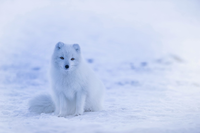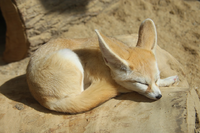Difference between revisions of "Evolution by Natural Selection"
| Line 31: | Line 31: | ||
| style="height:20px; width:200px; text-align:center;" |The [[Arctic Fox]] has '''evolved''' to have thick white fur and small ears. | | style="height:20px; width:200px; text-align:center;" |The [[Arctic Fox]] has '''evolved''' to have thick white fur and small ears. | ||
| style="height:20px; width:200px; text-align:center;" |The [[Desert Fox]] has '''evolved''' to have thin sandy coloured fur and very large ears. | | style="height:20px; width:200px; text-align:center;" |The [[Desert Fox]] has '''evolved''' to have thin sandy coloured fur and very large ears. | ||
| + | |} | ||
| + | |||
| + | ==Key Stage 3== | ||
| + | ===Meaning=== | ||
| + | |||
| + | |||
| + | {| class="wikitable" | ||
| + | |- | ||
| + | |[[File:HumanSkullEvolution.png|center|600px]] | ||
| + | |- | ||
| + | | style="height:20px; width:200px; text-align:center;" |This picture shows a series of human skulls starting on the left with a skull from 20 million years ago through to a modern human skull. | ||
|} | |} | ||
Revision as of 17:58, 20 September 2018
Key Stage 2
Meaning
Evolution means a change over time. All species on earth evolve.
About Evolution
- The different types of creatures we see today looked different millions of years ago. The creatures have evolved.
- A single animal or plant does not evolve. A whole population evolves over many generations.
- Evolution can be shown by looking at fossils of creatures that lived millions of years ago.
Examples
| The giraffe used to have a short neck. Over many generations the population of giraffes had longer and longer necks. |
| Arctic Fox | Desert Fox |
| The Arctic Fox has evolved to have thick white fur and small ears. | The Desert Fox has evolved to have thin sandy coloured fur and very large ears. |
Key Stage 3
Meaning
| This picture shows a series of human skulls starting on the left with a skull from 20 million years ago through to a modern human skull. |


